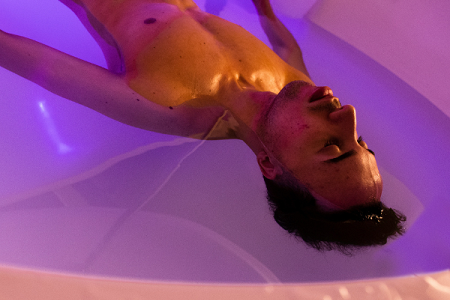How mindfulness differs across the world
We take a look at how the practice of mindfulness differs across cultures.

Mindfulness – being aware of yourself and the world around you – is not a new concept. Buddhism has extolled the powers of mindfulness for thousands of years. But now it’s undergoing a 21st Century revival with apps like Headspace and wearables like Spire putting the practice at your fingertips.
For a lot of people in the western world it’s a means to escape the stresses of modern life, but how does it differ around the world? We explore the different ways spirituality is practised in different cultures and how it can relate to mindfulness in modern city life.
Religion
Mindfulness has its roots buried deep in the history of Buddhist traditions. The term ‘mindfulness’ is a translation of the Pali (language native to the Indian subcontinent) word sati, which means ‘to remember’.
Sati is seen as one of the seven factors of enlightenment. It’s an antidote to delusion and considered a power which contributes to the attainment of nirvana; where greed, hatred and delusion have been overcome, abandoned and are absent from the mind.
Since its origin, practices of mindfulness have been adopted for a host of disciplines in western culture, from yoga and meditation to education and medical treatment.
But while mindfulness can be practised without Buddhism, Buddhism cannot be practised without mindfulness. In Buddhism, mindfulness meditation has three overarching purposes: knowing the mind; training the mind; and freeing the mind.
Medicine
In 1979, American Jon Kabat-Zinn founded the Mindfulness-Based Stress Reduction (MBSR) programme at the University of Massachusetts to treat the chronically ill. It sparked the application of mindfulness as a method of treatment and prevention of illness for both healthy and unhealthy people.
One of MBSR’s techniques was the ‘body scan’, derived from a traditional Burmese meditation practice called ‘sweeping’, which is now used widely in secular settings, including on the mindful apps we see today.
Health
While the app and wearable tech culture of modern health and fitness continues to boom worldwide, so is the practice of floating or sensory deprivation in order to enjoy mindfulness.
From India and Thailand to the UK and US, people are using floatation as a vehicle to achieve calm, relieve stress and heal, both mentally and physically.
In our sophisticated i-sopod tanks filled with Epsom salt water, people are able to shut out external distractions and find the peace needed to practise the ancient discipline of mindfulness.
New video is all about Floatation Therapy in India. Go check it out you gaizz https://t.co/XS4DBjAyt1 #wellness #luxury @YouTubeIndia
— Ruchika Batra (@Ruoie) September 22, 2016
Ever had a #floatation session? If you’re a #business owner, and you’re in #phuket - get yourself to the FloatHouse! pic.twitter.com/S80686Byst
— AustraliaWOW! (@australiawow) September 15, 2016
Productivity
Workplace wellness is becoming increasingly important for large companies where mindfulness training is offered to all employees. Companies such as Google, Apple, Procter & Gamble, and even the US Army offer mindfulness coaching, meditation breaks and other resources to improve wellbeing and productivity.
And it’s also being used in schools to educate children in the methods of mindfulness from an early age.
Mindfulness Without Borders, a social enterprise that offers educational programmes in mindfulness-based learning, has delivered workshops to over 1,500 educators in countries including Canada, Rwanda, Uganda, Nigeria, Israel, Jamaica and Botswana.
Since its Buddhist beginnings, the practice of mindfulness has come a long way, integrated into many religions and cultures from Taoist and Greek to Christian and secular, and used to cure, educate and enlighten.
And thankfully, the ancient art of mindfulness shows no signs of being consigned to the history books just yet.
Have you begun a journey of self-discovery? Check out our latest floating offers to find out firsthand how floating will help you become more mindful…










